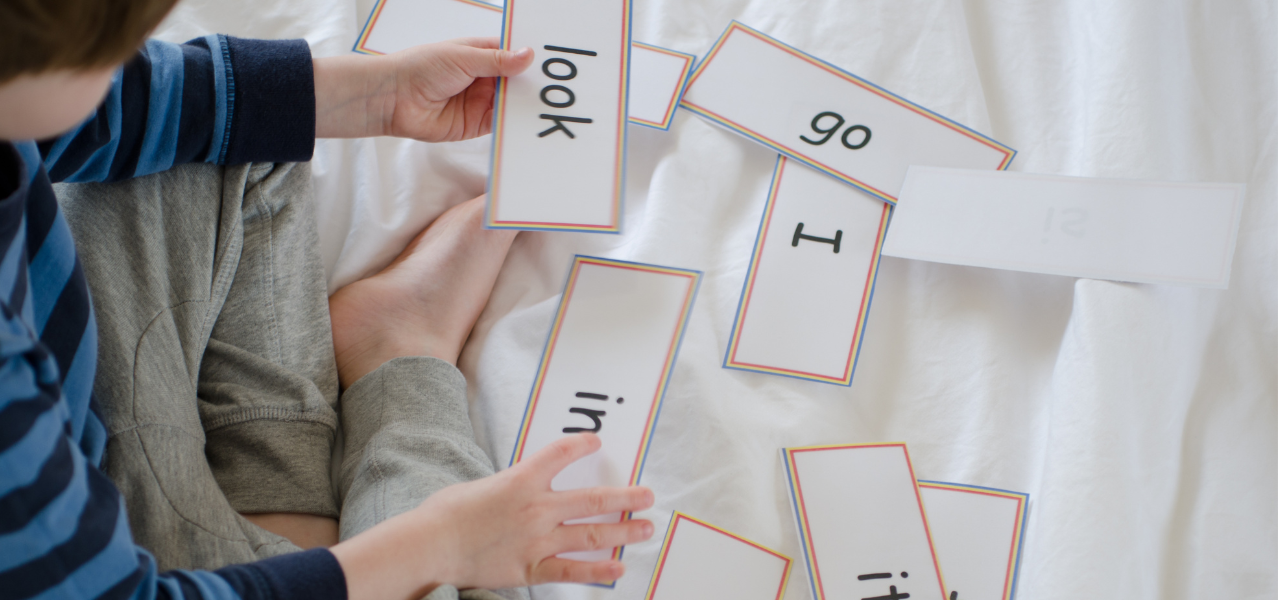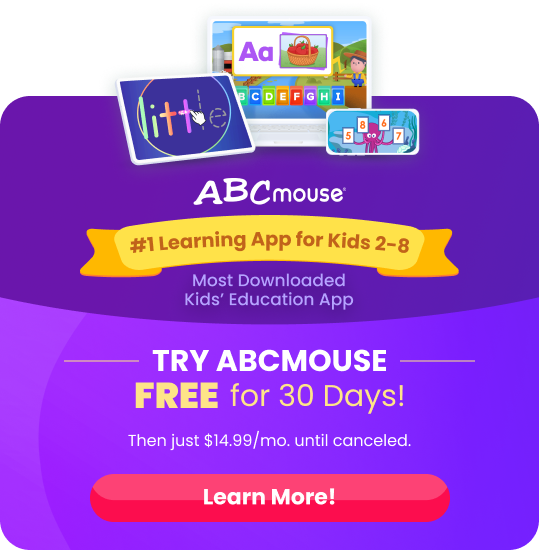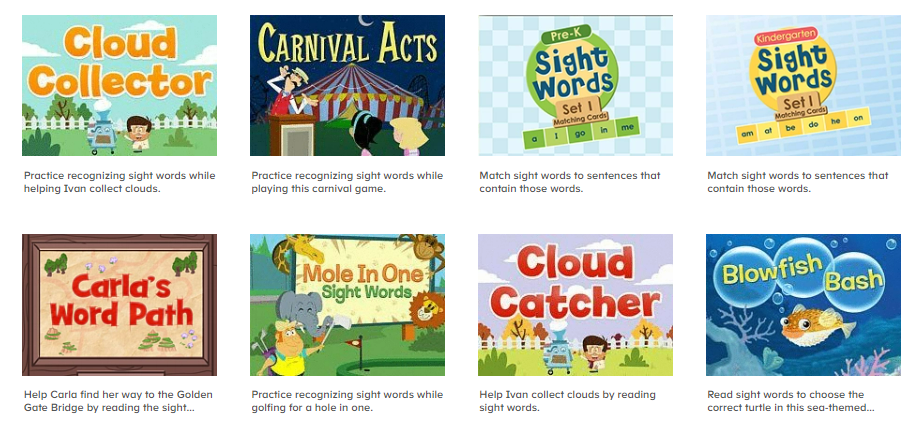
Kindergarten Sight Words List (Free Printables)
Learn the benefits of sight words and find a few simple tips to help teach them to your child.
The Benefits of Learning Kindergarten Sight Words
As children progress from pre-K to kindergarten, their reading skills continue to develop, and introducing kindergarten sight words (also known as high-frequency words) becomes an essential component of their literacy journey.
Kindergarten sight words are words that young readers should eventually learn to recognize instantly, after first learning a phonetic approach to the words.
Mastering these words can help improve reading fluency and comprehension, paving the way for more advanced reading abilities.

Learning kindergarten high-frequency words expands children’s reading abilities by exposing them to a wider range of words, enhancing their overall reading skills. It also boosts their reading speed and efficiency as they can recognize these words instantly, allowing them to focus on the meaning and context of the text.
Moreover, mastering kindergarten sight words prepares children for higher-level reading tasks and equips them to tackle more complex vocabulary, sentence structures, and literary concepts in the future.
List of Most Common Kindergarten Sight Words
Here is a list of the most common Kindergarten sight words, selected to be age-appropriate and relevant for children at this stage of their education.
| a | I | at |
| it | in | is |
| on | to | and |
| the | he | be |
| we | are | was |
| for | you | she |
| that | have | this |
| they | with | from |
4 Tips for Teaching Sight Words
As you embark on teaching kindergarten high-frequency words to your child, it’s important to remember some best practices to help ensure effective learning. Here are three essential tips to help make teaching sight words a successful and enjoyable experience:
- Consistency and Repetition
Consistency is critical when teaching sight words. Dedicate time each day to practice and review the words with your child. Repetition helps solidify the words in their memory, making it easier for them to recognize and read them over time.
- Start with a Few Words and Gradually Add More
Instead of overwhelming your child with a long list of sight words, start with a small group of words and gradually introduce more as they become comfortable with the initial set. This approach allows your child to build confidence and mastery before moving on to new words.
- Use Multi-Sensory Approaches
Using visual, auditory, and tactile methods can help your child engage with sight words. For example, have them trace the words with their fingers, use magnetic letters to form them, or listen to songs featuring sight words. This varied approach can make learning more engaging.
- Interactive Apps
Maximize the benefits of technology by utilizing interactive applications such as ABCmouse, specifically developed to educate pre-K learners about sight words. Vibrant animations, captivating melodies, and enticing incentives ensure the little ones remain motivated and engaged throughout the learning process.
Sentences Using Kindergarten Sight Words
To help your child better understand and apply the kindergarten sight words they’ve learned, practice finding the words in sentences. Have your child point to the sight word as you read the sentence. Here are ten example sentences that incorporate a variety of kindergarten sight words:
- She saw a cat.
- Give me the big red ball.
- They ran to the yard.
- We all went to the zoo.
- He will ride his new bike.
- She has a brown hat.
- The little boy was sad.
- They did a great job.
- I can see the car.
- There was a dog at the park.

Get Started with Kindergarten Sight Words
Mastering kindergarten sight words is critical to a child’s literacy development. Incorporating fun, engaging activities and consistent practice can help your child build a strong foundation in reading and language skills.
As their reading fluency and comprehension improve, they will be better prepared to tackle more advanced reading tasks in the future. Keep the learning experience enjoyable and positive, and watch your child’s confidence and love for reading grow.
As you introduce kindergarten sight words to your child, it’s a great idea to utilize a variety of engaging activities to make the learning process enjoyable and effective.
Playing games on ABCmouse.com is a great way to help children learn their sight words while having fun. Our early learning app has thousands of games activities and videos aimed at helping children learn sight words, reading, math, and more.

Keep Learning!
For more Kindergarten sight word fun, check out:
Two Letter Sight Word Tracing
Unlock Early Literacy Skills with these free printable Two-Letter Word Tracing Worksheets! 📚✏️
See Worksheets →
Kindergarten Sight Word Activities
Engage your child with hands-on activities that help build their sight word skills.
Go to Activity →
Color by Sight Word Worksheets for Kindergarteners
Enhance your kindergartener’s sight word recognition and coloring skills with our engaging Color by Sight Word Worksheets.
See Worksheets →
Kindergarten Reading Games
Your child can play interactive games designed to foster early literacy skills. Each game includes voiced instructions for easier understanding.
Browse games →
ABCmouse’s expert advice review process:
Our team of ABCmouse Curriculum Experts, made up of talented professionals in early childhood education and development, take a close look at educational content and learning claims. They put in the effort to make sure our information is accurate and current. We have a certified educator or another respected authority review the content, matching their expertise with the topic at hand. They’ll make sure the content is thorough and follows the latest research and educational guidelines. If they think we can make things even better, they’ll chat with our editorial team, and we’ll make those improvements right away. Only after a reviewer gives their thumbs-up does a piece of content get the official stamp of approval in the byline.


